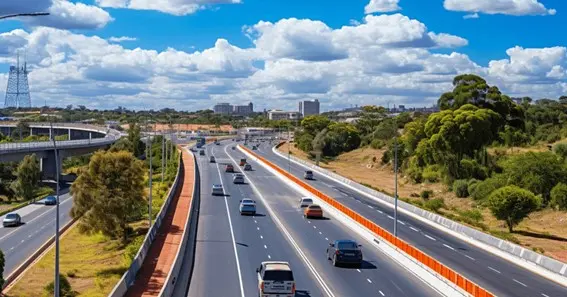Kenya’s highway system is structured using a classification scheme that categorizes roads from Class A to Class E, with Class A, B, and C highways being the most significant for regional and national connectivity. These highways are managed by the Kenya National Highways Authority (KeNHA) and play a critical role in connecting major cities, international borders, and economic hubs across the country. This guide will provide an overview of the primary road categories—Class A, B, and C—and examples of highways under each class.
Overview of Highway Classifications in Kenya
1. Class A Roads: International Trunk Roads
Class A roads are the most critical highways, forming international corridors that link Kenya with neighboring countries. These roads connect significant urban centers, ports, and international borders, facilitating both local and cross-border trade. Examples include:
- A109 (Mombasa Road): Connecting Nairobi to Mombasa, Kenya’s main port city.
- A1: Running from the Tanzanian border at Namanga to the South Sudan border at Lokichogio.
- A2: Linking Nairobi to the Ethiopian border at Moyale.
2. Class B Roads: National Trunk Roads
Class B highways are crucial national routes that connect major towns, counties, and economic centers. They often serve as links to Class A roads, ensuring smooth transitions between regional hubs. Notable examples of Class B roads include:
- B1: Stretching from Busia to Nakuru.
- B3: Connecting Kisii to Nairobi via the Maimahiu route. These roads are essential for domestic trade and regional connectivity.
3. Class C Roads: Primary Roads
Class C highways primarily serve intra-county travel, connecting smaller towns and key local centers. They also provide links to higher-class highways, facilitating access to more remote areas. Examples include:
- C63: A route linking Ruiru and Kiambu via Tatu City.
- C77: Connecting various provincial hubs within Kenya’s counties.
Importance of Kenya’s Highway Network
The classification system ensures that road development is structured to meet Kenya’s transportation needs, from facilitating international trade to supporting local travel. This organized network not only supports economic activities but also enhances regional integration within East Africa. Understanding the hierarchy and purpose of these highways offers valuable insights into the nation’s transportation framework.
FAQ
- What are Class A roads in Kenya?
- Class A roads are international highways that connect Kenya to neighboring countries and major ports, facilitating cross-border trade.
- How are Class B roads different from Class A?
- Class B roads are national highways linking key towns and economic centers within Kenya, while Class A roads focus on international connectivity.
- What is the role of Class C roads in Kenya?
- Class C roads serve as primary routes within counties, connecting smaller towns and local centers to more significant highways.
- Who manages Kenya’s highway network?
- The Kenya National Highways Authority (KeNHA) oversees the development and maintenance of Class A, B, and C roads.
- Can Class C roads be upgraded to Class B?
- Yes, roads can be reclassified based on their importance and the volume of traffic, subject to government assessment and development plans.
Check out this insightful post is-ashley-gutermuth-husband










